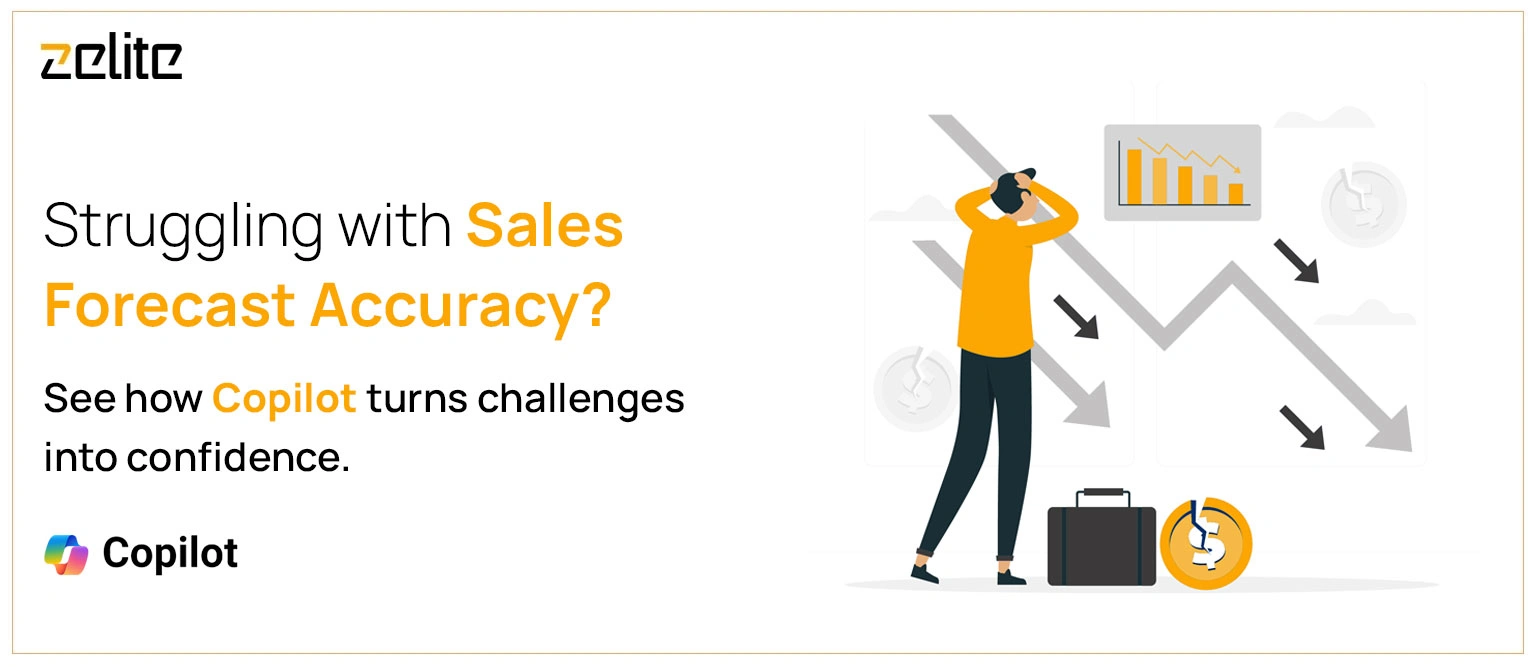Sales teams don’t struggle to close deals—they struggle to manage everything that comes before the close. Accurate pipeline forecasting is essential for driving revenue growth and effective strategic planning, yet it continues to be one of the most significant challenges faced by sales organisations in 2025. In this blog, we’ll dive into the key hurdles in pipeline forecasting and explore how Microsoft Dynamics 365 Copilot utilises AI and automation to tackle these issues head-on.
The Importance of Sales Pipeline Automation
In today’s ever-changing business landscape, optimising your pipeline is essential for companies looking to sustain and grow their operations. A thoughtfully crafted sales pipeline automation strategy is the foundation for boosting sales, improving seller productivity, and ensuring long-term success.
By automating key processes and delivering the right data at just the right time, Microsoft Dynamics 365 Sales (D365) streamlines the entire sales cycle. Ultimately, it empowers teams to close deals more effectively by enabling smooth management of leads from their initial identification all the way through to qualification and conversion into opportunities. With data-driven automation, your business can enhance sales forecasting, build stronger relationships with customers, and establish a more accurate and predictable sales pipeline.
Common Pipeline Forecasting Challenges: The Biggest Challenges Facing Sales Forecasting Today
Creating a Strong Pipeline
Building a strong pipeline of potential leads, rather than just closing deals, is what many organisations have discovered to be the most difficult aspect of sales. Businesses need to meet new potential customers, establish a strong presence in the community, and move those customers through their sales funnel.
Having a strong web presence can help resolve these problems. You may develop an automated system that attracts customers by establishing trust and providing them with free information if you have the correct CRM. By doing this, you can show off your knowledge and start a discussion that could lead to a sale. You must build a sales pipeline and a simplified sales process that meets the needs of your business in order to implement this system.
Tackling Price Concerns
One of the biggest obstacles to sales that companies encounter is price increases. These worries can occasionally be justified and stem from issues unique to the client. In other cases, a client may be attempting to pressure you into accepting a better offer.
In any case, you are ready to handle price issues. Determining a client-based solution and comprehending the nature of a client’s purpose will be your challenges. Only with the necessary technological tools to provide you with the knowledge you need to formulate a suitable plan can you come up with a suitable answer. With that knowledge, you can establish targeted strategies to address a client’s issues.
Subjective Data and Conjecture
The utilisation of subjective data is one of the biggest challenges in sales forecasting. Many salespeople lack the knowledge, resources, and data necessary to make informed assumptions about a sales forecast. Sales issues might be exacerbated by the complexity of forecasting sales using subjective data. For instance, a sales team may estimate one figure when asked about revenue growth, even when objective statistics could suggest a different figure is more accurate.
Comprehensive Economic Issues
Every industry is impacted by the overall state of the economy. Therefore, some of the more important challenges of sales forecasting are supply-chain stability, labour supply, inflation, and economic growth.
When forecasting sales, your company needs to keep this larger financial picture in mind. Additionally, you should look for possible opportunities in this area. Let’s say, for instance, that your sales projections suggest supply-chain stability would offer issues down the road. In order to prevent future issues, it is worthwhile to enquire about alternate supply-chain connections or how to place purchases in advance.
Industry-Specific Conditions
The conditions in each industry can make sales forecasting more difficult. A forecast can be made or broken by shifting governmental policies, global conflicts, or even something as basic as local infrastructure.
Locally, statewide, and nationally, your team must keep an eye on these changes. The CRM or prediction tool you use should be updated with these modifications. AI sales forecasting can help you better handle this data and illustrate how these tools might affect your sales projections.
Primary Copilot features Includes:
- AI-Generated Email Drafts & Follow-Ups: Sales teams may concentrate on high-value tasks by using automated customer email drafts and follow-ups, which minimise manual labour.
- Action Items & Meeting Summaries: After a call, get AI-generated action items and meeting summaries right away, doing away with the need to listen to the recordings again.
- Real-Time Data Integration: For a cohesive sales experience, seamlessly integrate Teams, LinkedIn Sales Navigator, Microsoft 365, and other platforms.
How Dynamics 365 Copilot Solves Pipeline Forecasting Challenges:
Boost Your Sales Process with the Latest Dynamics 365 Features & Copilot Capabilities To equip sales teams with the best tools available, Microsoft is always rolling out new features and enhancements for Dynamics 365 Sales. The latest AI-driven Copilot brings groundbreaking advancements in sales automation and customer relationship management.
- Market Volatility: Real-time data and predictive analytics allow rapid forecast adjustments.
- Optimism Bias: AI-driven probability scoring grounds forecasts in objective data.
- Incomplete/Poor Data: Automated data capture, AI-powered insights, and CRM integration ensure data quality.
- Manual Processes: Automated workflows, AI-generated emails, and meeting summaries save time and reduce errors.
- Lack of Standardisation: Built-in pipeline review tools and customisable dashboards support consistent forecasting.
- Complex Buyer Journeys: 360-degree customer views and AI recommendations guide next best actions.
- Integration Gaps: Seamless integration with Microsoft 365, Teams, LinkedIn, and other platforms unifies data.
Conclusion
Microsoft Dynamics 365 Sales enables teams to work more efficiently, close deals more quickly, and improve client relationships by tackling five typical sales obstacles. Dynamics 365 might well be the game-changer your company needs to maximise its sales strategy.
Are you ready to increase your sales? To find out how Dynamics 365 Sales can revolutionise your sales process, get in touch with Zelite Solutions right now.
To understand more about the broader impact of AI on sales forecasting and the limitations of traditional methods that necessitate tools like Copilot, read our deep dive here:
How AI is Revolutionising Sales Forecasting: A Deep Dive into Pipeline Insights




